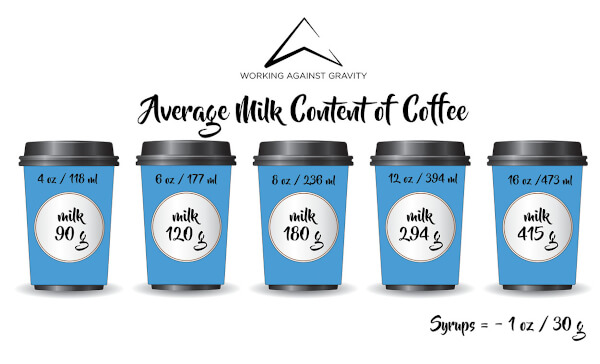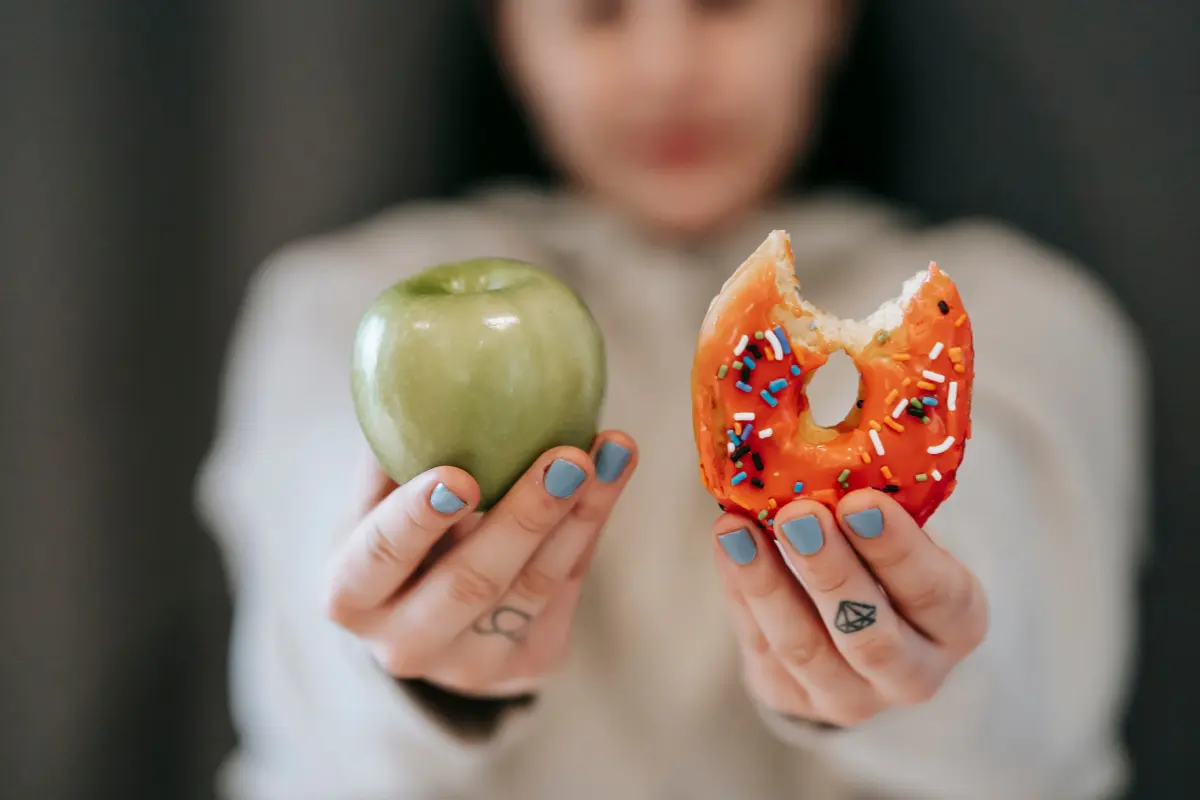
If there is anything that Crossfitters, bodybuilders, endurance athletes, weightlifters, powerlifters, ballet dancers, cardio bunnies and couch potatoes can unite together and celebrate, it’s the fact that coffee exists and is calorie-free.
However, if you don’t drink your coffee black then you are consuming extra calories in your cup. Make sure that your daily latte isn’t contributing to your stalled weight loss.
WAG has been tracking coffee for years. We even have a barista on staff! So if you enjoy a milky, barista-made coffee then we have some pointers to help you track the calorie and macronutrient content of your cappuccino as accurately as possible.
A little side note — we’ve already brought you Starbucks Macro Hacks. So if you want to turn your orange mocha Frappuccinos into something more macro-friendly, check that blog post out too!

Advertisement
Clearing up Tracking Mistakes
- To be accurate with your macros you need to track food and drink by weight. Entering a 12 oz. latte into your tracking app as “1 latte” or “12 oz. latte” leaves you open for huge inaccuracies.
- Your cup varies by 5 - 50 g of milk, sugar, syrup, etc. every day – even if you order the same thing from the same barista at the same cafe, regardless of their best intentions.
Coffee in Your Cup
- You need to account for the volume of coffee so that you can subtract its weight from your cup. Since it’s calorie-free, you don’t need to track it!
- A double shot of espresso yields between 30 - 40 g of liquid, depending on how the barista has determined it tastes best that day.
- Always ask your barista how many shots of coffee they serve. If only a single shot, account for half the yield (15 - 20 g liquid). This varies from cafe to cafe.
- Estimate the milk in your cup by taking the volume of the cup in grams and subtracting the volume of the coffee (15 - 20 g single shot, 30 - 40 g double shot).
Tracking Steamed Milk (How Much is Actually in Your Cup?)
Short of asking the barista to weigh your milk (if you want to, do it...I would!) here is the 411 about what’s your cup.
- When milk is steamed before being poured (e.g. cappuccino, latte, flat white, mocha) the barista literally lets air into the milk. The milk expands and stretches to create that creamy texture and froth on top that you love so much.
- This means a lot for your macros. For example, although your cup holds 12 oz. of liquid it isn’t going to hold exactly 12 oz. of milk. A percentage of that milk is now air.
- It’s common for dine-in and to-go cups of the corresponding size, from the same cafe, to differ from 30 - 20 ml. The dine-in cup is smaller. Make sure you’re not tracking the same amount of liquid for both!
Calorie Sucking Syrups and Sauces
Mocha, vanilla, caramel and hazelnut lattes are all extremely carb-dense. 1 ounce / 30 g of syrup in your cup is giving you between 15 - 30 g of carbs. Be mindful when adding flavors!
Average Milk in Your Latte
Use this infographic to be mindful of how much milk is going into your cup. Whole, skim, 2%, nonfat, soy, almond, etc., the averages apply to them all. Now enjoy that latte without worry!

How to Be Super Duper Approximate and Exact
Sometimes our macro-tracking regimen has no margin for error and estimating simply isn’t good enough.
Advertisement
The best way to track your approximate milk intake is to:
- Use a scale to weigh and note your full cup.
- Drink and enjoy.
- Weigh the empty cup and subtract that from the reading of your full cup in step 1.
- Subtract the weight of the coffee and syrups (15 - 20 g single shot, 30 - 40 g double shot, 30 g syrup).
- The remaining weight is what you consumed in milk.
Staying on track and enjoying lattes?! #WAGgoals
Dani Sheriff
Schedule a Free Intro Call
Working Against Gravity has led the macro tracking and health space for over a decade. Our team doesn’t just understand the science of nutrition—we’ve spent years mastering the art of tailoring it to fit your life. That means no cookie-cutter plans, just real strategies that have worked for over 30,000 people.
Schedule a free call with our team to learn how working with a 1-on-1 WAG coach will help you reach your goals.



